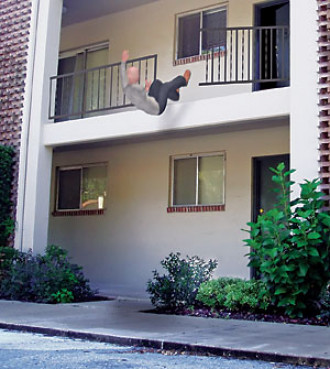SHARE:
Florida Law
New Courtroom Tactic: Animated Evidence
Legal Art Works uses 3-D technology to help raise judgments.
When Jeff Davis started Legal Art Works in 2003, the typical attorney arguing a medical malpractice suit went to trial with a series of detailed medical illustrations to help explain the case. Not anymore. Many attorneys now want jurors to see 3-D images of the litigant’s injuries, including animated depictions of surgery in some instances. The same goes for accident cases. Some of the 3-D animated videos that Davis’ Jacksonville firm has produced include a man falling from a second-story walkway and a jogger being hit from behind by a flashy sports car.
 Legal Art Works’ 3-D animation re-creates an accident. |
Davis’ ultimate audience isn’t just judges and jurors. Since many cases are settled before going to trial, attorneys want their high-tech exhibits in place for pretrial mediations and other sessions, Davis says. Giving the opposition a taste of what they’ll be up against if the case goes to trial can force a quick and lucrative settlement. “We joke that it’s about the OCF — the ‘oh crap factor,’ ” Davis says. “The whole point is they want to evoke fear in the other side.”
VIDEO 3-D Animated Evidence Watch a demonstration. Click here |
Davis, 36, started Legal Art Works five years ago in his parents’ 300-sq.-ft. converted garage and didn’t pay himself a salary for the first two years. The company now employs eight and operates in more than 3,000 square feet of office space. Davis projects 2009 revenue will approach $1 million. The Florida Bar hasn’t studied the issue yet, but the American Bar Association reports that in 2007, 25% of midsized law firms used animated exhibits, up from just 4% in 2006.
 Jeff Davis |
Davis says his company, which works with forensic experts for accuracy, also produces traditional materials such as medical illustrations, timelines, charts and accident diagrams. The company charges between $5,000 and $25,000 for its 3-D animated videos. Spending so much can be a gamble. Judges can refuse to allow an exhibit, for example, if they find the animation inaccurate or misleading or if they determine that a video is too manipulative to show to jurors.
Davis expects that advancing technologies will lead to even more courtroom animations. He thinks the next big trend will be “interactivity” — an attorney could touch a screen to stop, start and move images around, for example. “Ultimately,” he says, “you’ll see all kinds of things like, perhaps, 3-D holograms of people.”























